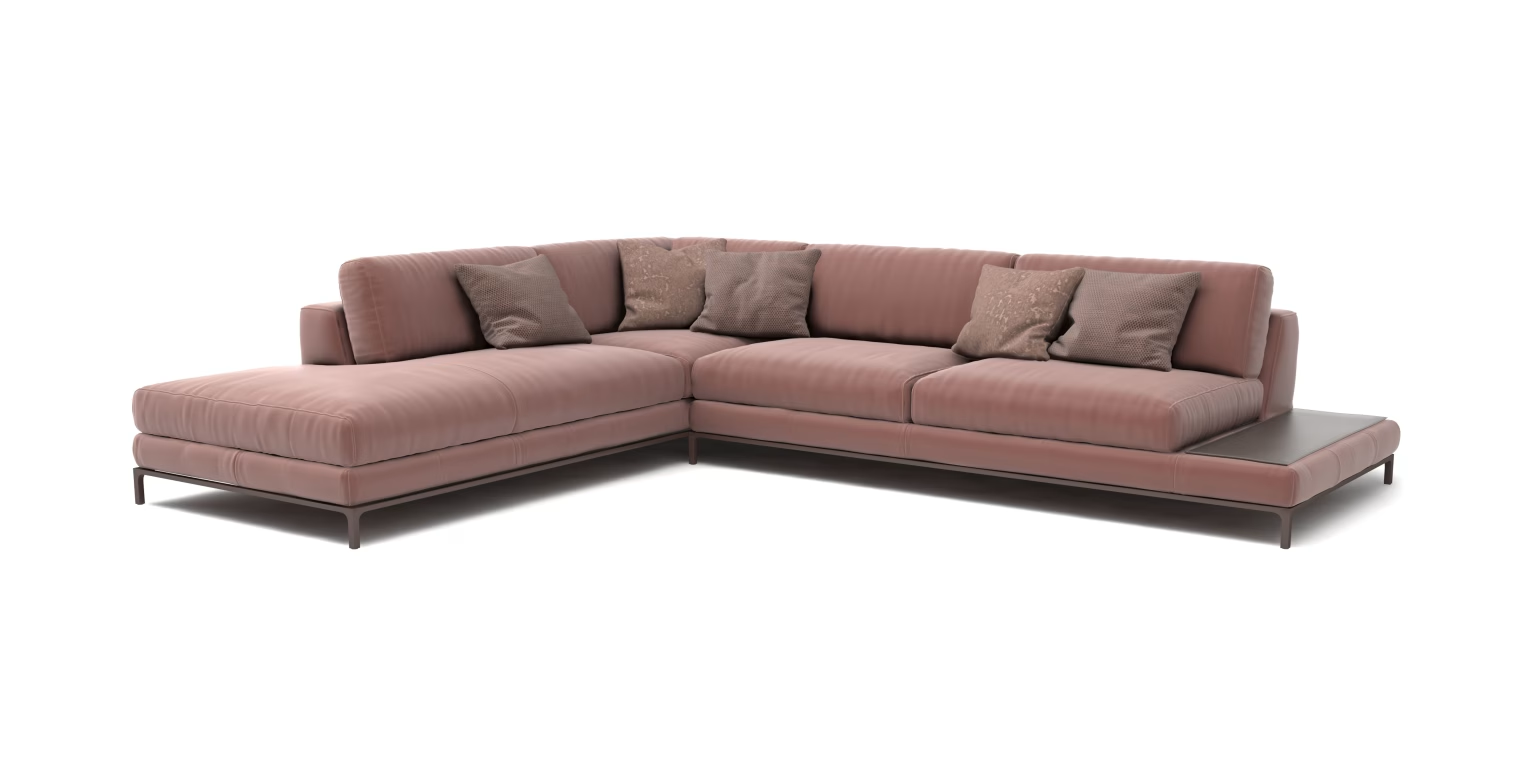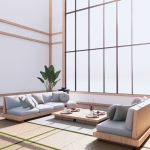Your sofa is the heart of your living room. It’s where you unwind, host guests, and bond with family. The right Sofas adds comfort and beauty to your space. But with so many styles, fabrics, sizes, and shapes, picking the perfect one can be tough. This guide will help you through every step, ensuring you make the best choice for your living room.
Sofas for Your Living Room
1. Assess Your Space
Before looking at styles and colors, measure your living room. Note the size of doorways, windows, and other furniture. This will guide you to the right size and shape for your sofa.
Key Considerations:
- Room Size: Big rooms can handle large sofas, like sectionals. Smaller rooms need smaller sofas, like two-seaters or loveseats.
- Doorways and Staircases: Make sure your sofa fits through doors and stairwells. Measure these spaces carefully.
- Layout: Think about where your sofa will go. Will it be against a wall, in the center, or in a corner? Is it part of an open-plan area?
Pro Tip:
Use painter’s tape to mark the sofa’s size on your floor. This helps you see how much space it will take up. It prevents you from buying a sofa that’s too big or too small.
2. Choose the Right Sofas Size
After measuring your space, pick the right sofa size. Sofas come in many sizes. Choosing one that fits your room well is key to a balanced look.
Sofa Sizes:
- Loveseat (2-seater): Great for small rooms or as extra seating. It’s usually 52–72 inches wide.
- Standard Sofa (3-seater): Versatile for most rooms, it’s 72–92 inches wide.
- Sectional Sofa: Ideal for big or open-plan areas. Sectionals can be customized in many ways, like L-shaped or U-shaped. Sizes vary by configuration.
- Chaise Sofa: A sofa with a long chaise lounge on one side. It’s perfect for relaxing or stretching out.
Pro Tip:
Leave 18–24 inches of space around your sofas. This prevents it from feeling cramped.
3. Consider Sofa Style
Sofas come in many styles. The one you choose should match your taste and your living room’s decor. Here are some popular styles:
Popular Sofa Styles:
- Mid-Century Modern: Known for clean lines, tapered legs, and a minimalist look. It suits modern and eclectic spaces well.
- Chesterfield: Famous for deep button-tufting, rolled arms, and luxurious leather or velvet. It’s a classic, elegant choice.
- Contemporary: Sleek and minimal, contemporary sofas have smooth lines and neutral colors. They’re perfect for modern homes.
- Sectional: Versatile and spacious, sectionals are great for large families or entertaining. They can be customized to fit any space, offering extra seating or lounging options.
- Traditional: Often has rolled arms, skirted bases, and plush cushions. Traditional sofas add coziness and familiarity.
Pro Tip:
Think about your living room’s furniture and decor. Your sofa should complement the room’s style, whether it’s modern, traditional, or a mix.
4. Pick the Right Upholstery Fabric
The fabric of your sofa greatly affects its look, feel, and durability. With many choices, pick one that fits your lifestyle and style.
Fabric Types:
- Leather: It’s durable, easy to clean, and adds luxury. It gets better with age but can be pricey and feel cold or hot.
- Cotton: It’s natural, breathable, and soft. Cotton comes in many colors and patterns but may not last as long as synthetic fabrics.
- Linen: Linen is light and breathable, giving a casual look. It’s best for formal spaces or homes without kids or pets, as it can wrinkle and stain.
- Microfiber: It’s synthetic, soft, durable, and stain-resistant. Great for families with kids or pets.
- Velvet: Velvet is plush and luxurious, adding glamour. It’s high-maintenance and shows wear, best for low-traffic areas.
- Performance Fabrics: These are durable and stain-resistant, perfect for busy homes. They’re also fade-resistant and easy to clean.
Pro Tip:
For homes with pets or kids, choose durable, stain-resistant fabrics like microfiber or performance fabrics. Velvet or linen is better for formal rooms.
5. Select a Color or Pattern
Choosing the right color or pattern for your sofa is key. It sets the room’s tone. Your sofa’s color should match your living room’s overall look.
Color Options:
- Neutrals: Beige, gray, white, and other neutral tones are versatile and timeless. They make it easy to change decor without replacing the sofa.
- Bold Colors: A bold-colored sofa, like deep blue or emerald green, adds personality. It can be a statement piece.
- Patterns: Patterns like stripes or florals add interest. However, they might limit future decorating options.
Pro Tip:
If unsure about a bold color or pattern, choose a neutral sofa. Add pops of color with throw pillows, blankets, or artwork.
6. Evaluate Cushion Comfort and Support
Comfort is crucial when choosing a sofa. Cushion quality is key. The cushions should be soft yet supportive for long-lasting comfort.
Cushion Fillings:
- Foam: High-density foam cushions are firm and keep their shape. Low-density foam is soft but may lose shape over time.
- Feathers/Down: Feather or down-filled cushions are soft and luxurious. They need regular fluffing to keep their shape.
- Fiber Fill: Fiber-filled cushions are soft but less supportive than foam. They’re more affordable than feathers.
- Memory Foam: Memory foam cushions conform to your body for comfort. They’re durable but can be pricey.
Pro Tip:
Test the cushions by sitting on the sofa for 5–10 minutes. Think about your preferred firmness or softness. Consider how the cushions will last with regular use.
7. Consider Sofa Configuration
The way your sofa is set up is key, especially in unique spaces. Sectional sofas can be shaped in many ways. Modular sofas let you change their layout easily.
Common Configurations:
- L-Shaped: Perfect for corners or open-plan areas.
- U-Shaped: Great for big rooms and families needing more seats.
- Chaise: Offers a cozy spot to relax.
- Reclining: Provides extra comfort with adjustable parts.
- Modular: Made of separate pieces for easy rearrangement.
Pro Tip:
For those who like to change their furniture, choose a modular sofa. It’s easy to move and reconfigure.
8. Budget Wisely
Sofas vary in price, from affordable to designer pieces. Setting a budget helps narrow your choices and avoid overspending.
Budget Tips:
- Shop Around: Compare prices online and in-store for the best deal.
- Consider Financing: Some stores offer financing to spread the cost.
- Look for Sales: Watch for holiday sales or clearance events for discounts.
Pro Tip:
A sofa is a long-term investment. While cheap options are tempting, choose quality and durability for lasting value.
9. Test Durability and Build Quality
A well-made sofa lasts for decades, while a cheap one may not. Check the frame, upholstery, and craftsmanship when shopping.
Build Quality Tips:
- Solid Wood Frames: Look for kiln-dried hardwood frames for durability.
- Joint Construction: Reinforced joints like dowels are better than nails or staples.
- Spring Systems: 8-way hand-tied springs or sinuous systems offer better support.
Pro Tip:
Ask about warranties or return policies for a risk-free purchase.
Finding the perfect sofa for your living room can be challenging. But by considering size, style, fabric, comfort, and durability, you can find a stylish and functional sofa. Whether you want a modern sectional or a classic Chesterfield, research and test to ensure your sofa is a long-term favorite.






